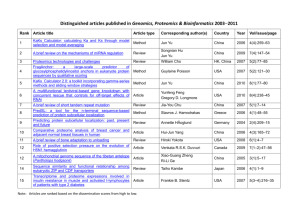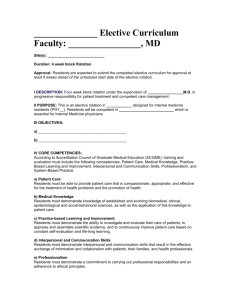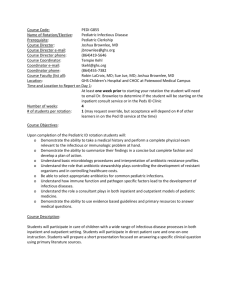House Staff Manual - Rady Children`s Hospital
advertisement
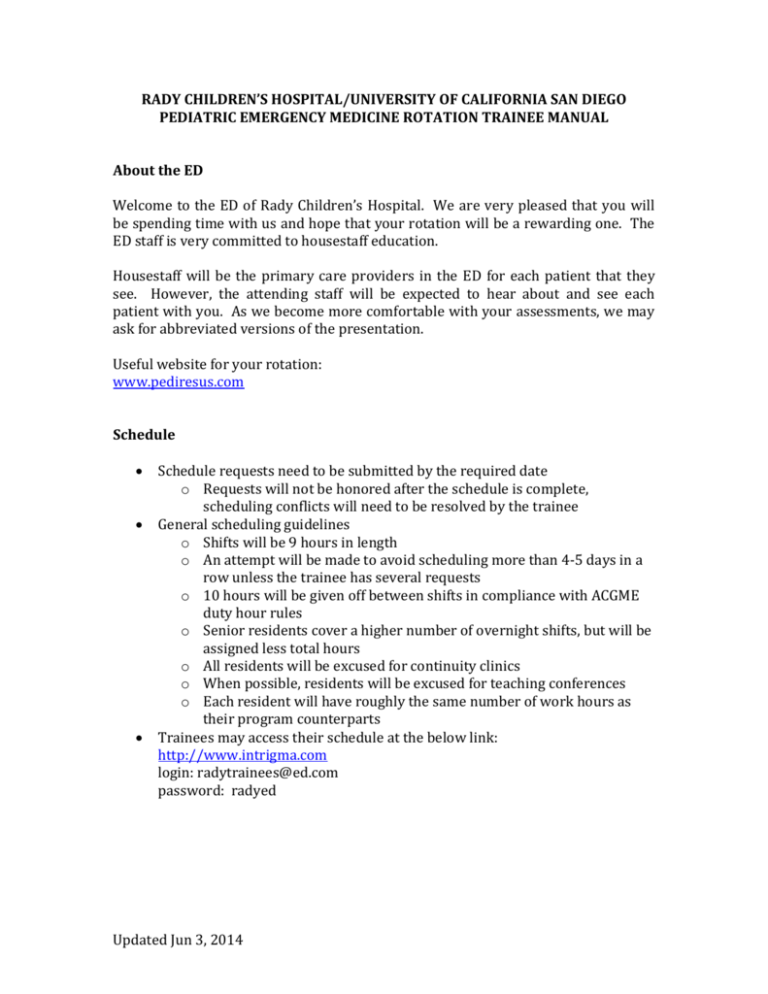
RADY CHILDREN’S HOSPITAL/UNIVERSITY OF CALIFORNIA SAN DIEGO PEDIATRIC EMERGENCY MEDICINE ROTATION TRAINEE MANUAL About the ED Welcome to the ED of Rady Children’s Hospital. We are very pleased that you will be spending time with us and hope that your rotation will be a rewarding one. The ED staff is very committed to housestaff education. Housestaff will be the primary care providers in the ED for each patient that they see. However, the attending staff will be expected to hear about and see each patient with you. As we become more comfortable with your assessments, we may ask for abbreviated versions of the presentation. Useful website for your rotation: www.pediresus.com Schedule Schedule requests need to be submitted by the required date o Requests will not be honored after the schedule is complete, scheduling conflicts will need to be resolved by the trainee General scheduling guidelines o Shifts will be 9 hours in length o An attempt will be made to avoid scheduling more than 4-5 days in a row unless the trainee has several requests o 10 hours will be given off between shifts in compliance with ACGME duty hour rules o Senior residents cover a higher number of overnight shifts, but will be assigned less total hours o All residents will be excused for continuity clinics o When possible, residents will be excused for teaching conferences o Each resident will have roughly the same number of work hours as their program counterparts Trainees may access their schedule at the below link: http://www.intrigma.com login: radytrainees@ed.com password: radyed Updated Jun 3, 2014 Time and Attendance As with any other rotation, please be on time. If you are ill and cannot come to your shift, please call your chief resident and the ED attending at 858-9668800. Email Dr Matt Murray mpmurray@rchsd.org and Dr Shannon Wai swai@rchsd.org of your absence. Professional Appearance Please ensure that all clothing is professional and appropriate for the work environment. We expect housestaff to be dressed in neat clothes or clean scrubs and optional white coat. No open toed shoes. You must wear your hospital ID badge at all times. Professional Behavior Please treat every interaction with patients and families as you would expect to be treated. Assist in helping parents that are upset. Please communicate to the families about their plan of care in the emergency department and what they should expect going forward, this will help in easing anxiety. If you notice another resident is struggling with his/her patients and has an excessive workload, please be a team player and offer to help. Patients To Be Seen Patients will be seen according to acuity, then in order of time in the room. Avoid the temptation to pick and chose patients as each patient can be a valuable learning experience. If you go to see a patient and they are toxic-appearing or you are concerned about them, notify the attending immediately. Initially, discuss the ordering of all lab and x-ray studies with the attending. Once the attending agrees with the plan, communicate this to the bedside nurse so that all team members can be involved. Departmental Cleanliness We are responsible for cleaning up after ourselves so remove and dispose of your sharps (but don’t re-cap the needles) and place objects back in their proper place when done using them. Updated Jun 3, 2014 Educational Responsibilities Prior to your ED rotation, please identify specific goals you would like to accomplish and review these with the attendings to which you are assigned as we can help you achieve these goals. Conferences We will have a monthly educational conference for the residents, fellows and medical students that are required attendance: 1st Wednesdays: 9am-1pm 2nd Wednesdays: 8am-11am 3rd Wednesdays: 7:30am-9:30am Evaluation You are required to have 10 evaluation forms completed by the ED attendings. Each time you work with a new attending, please give them an evaluation form to fill out. The evaluation forms are attached to this file. A mid training evaluation will be scheduled with Dr. Murray or Dr Wai. These evaluations will need to be completed as part of the requirement to receive credit for this rotation. Charting/Computer Access All charting will be done on EPIC. All charting must be completed within 12 hours after the end of your shift. Your program directors will be notified for delinquent charts that are not done after 24 hours of your shift. You will be given a tutorial in our computer order entry and electronic charting prior to the start of your rotation. Complete all charts including a section on medical decision making prior to leaving at the end of your shift. The tutorial can be found at www.chexweb.com. Once your paperwork has been received by the GME office, a login and password will be issued to you for CHEX. Consults The consultants on call for the day are listed on the Rady Children’s homepage and they can be web-paged. Please document the name and title of the consultant you spoke with in your chart, and document the plan. Updated Jun 3, 2014 Other General Guidelines If you are concerned about potential child abuse, discuss the case with the attending. They will help you to appropriately document your concern and they will know of the appropriate channels to go through for reporting. Dog bites must be reported- check with the nurse to be sure that this has been done. If there is a concern for poisoning or overdose, call poison control (number listed on most phones). For concerns or questions regarding the rotation: Richelle Belen (rotation coordinator for all residents): rbelen@rchsd.org Dr Matt Murray (EM residents): mpmurray@rchsd.org Dr Shannon Wai (Peds/FM residents): swai@rchsd.org Office: (858) 966-8036 Updated Jun 3, 2014 GENERAL OBJECTIVES 1. Develop a logical, efficient approach to the assessment of the ill pediatric patient. 2. Put into practice the rapid cardiopulmonary assessment learned in PALS. 3. Learn to prioritize and triage patient care. 4. Become adept at procedures necessary to resuscitate and stabilize pediatric patients. 5. Build and expand knowledge base and technical skills regarding pediatric emergencies. 6. Learn how to deal with families, patients, and medical staff. 7. Learn good charting/documentation. 8. Learn when certain pediatric problems should be admitted and when they can be safely sent home. Updated Jun 3, 2014 EDUCATIONAL OBJECTIVES 1. Initial evaluation a. Become familiar with the triage process b. Be able to perform a rapid cardiopulmonary assessment. c. Be familiar with what vital sign values should trigger an immediate evaluation. 2. Life support a. Become proficient in the airway management of a pediatric patient including both basic and advanced airway skills. b. Learn how to lead a resuscitation effort. c. Evaluate and treat a child with potential trauma. d. Learn how to evaluate and treat shock. 3. Allergy a. Understand the presentation, treatment, and complications of asthma. b. Learn to manage a child with anaphylaxis. 4. Child abuse a. Know the most common presentations of physical and sexual abuse. b. Understand differentiation of non-accidental and accidental bruising. c. Be familiar with reporting laws. d. Know the indications for head ct and skeletal survey in a potential non-accidental trauma. 5. Dermatology a. Know how to recognize and treat drug reactions, contact dermatitis, fungal infections, lice, and scabies. b. Understand what is a petechial/purpuric rash in addition to the differential and treatments for these rashes. 6. Endocrine a. Recognize and treat DKA. b. Diagnose and manage hypoglycemia 7. Gastroenterology a. Develop a differential for abdominal pain based on presentation/age/sex. b. Understand approach to upper and lower GI bleeding. c. Assess and treat various stages of dehydration secondary to vomiting and diarrhea. d. Manage and treat intestinal obstruction/hernias. 8. Gynecology Updated Jun 3, 2014 a. Understand and treat dysfunctional bleeding b. Evaluate and treat vaginal discharge/vaginitis. c. Management of PID. 9. Hematology a. Manage sickle cell crisis and sickle cell patient with fever. b. Develop an assessment for acute onset bleeding/bruising. c. Manage hemophiliacs with trauma. d. Manage fever and neutropenia. 10. Infectious disease a. Evaluate and treat patients with multiple infectious etiologies. b. Develop an approach to the assessment and treatment of the febrile infant and toddler. c. Manage animal bites. 11. Neurology a. Manage febrile seizures b. Approach to a patient with altered mental status. c. Approach to first time seizure and status. d. Evaluate possible vp shunt obstruction. e. Assess and treat headaches. 12. Ophthalmology a. Learn vision screening and basic visual exam skills. b. Learn to evaluate and treat corneal abrasions, hyphema, conjunctivitis, and ocular foreign body. 13. Orthopedic a. Form an approach to the evaluation of a limping child b. Manage nursemaid’s elbow. c. Diagnosis and treatment of fractures/sprains. 14. Pain Management a. Use of different pain management techniques b. Understand different types of procedural sedation. c. Understand use of local anesthetics. 15. Psychiatric a. Learn how to approach a suicidal or violent patient. 16. Pulmonary a. Recognize and treat respiratory failure b. Evaluate and treat patients with aspiration, foreign body ingestion, pneumothorax. 17. Urology/Nephrology a. Evaluation and treatment of testicular pain. b. Hematuria evaluation c. Balanitis and phimosis treatment d. Manage and treat renal failure Updated Jun 3, 2014 18. Toxicology a. Manage the child with ingestion of unknown substance. b. Recognize and treat specific ingestions/poisonings. 19. Trauma a. Become familiar with primary and secondary survey for a trauma patient. b. Understand how to evaluate and treat a child with specific traumatic injuries. Updated Jun 3, 2014 PROCEDURES Residents will be able to learn and perform the following procedures in the ED as long as the attending is aware and agrees with your plan. Some procedures are rare and you may not see any patients to be able to perform them. 1. Arterial puncture/arterial line 2. Abscess aspiration/ incision and drainage 3. Local anesthesia administration 4. Digital block 5. Foreign body removal from soft tissue, ear, nose, mouth, and eye 6. Suturing 7. Paronychia drainage 8. NG placement/gastric lavage 9. Burn dressing 10. Wound irrigation 11. Peripheral IVs (with nursing assistance) 12. Intubation 13. Lumbar puncture 14. Conscious sedation 15. Nursemaid’s elbow reduction 16. Fluorescein staining of cornea 17. Eye irrigation with Morgan lens 18. Ring and fishhook removal 19. Incarcerated hernia reduction Updated Jun 3, 2014 RADY CHILDREN’S HOSPITAL/UNIVERSITY OF CALIFORNIA SAN DIEGO ROTATING TRAINEE EVALUATION BY FACULTY TRAINEE’S NAME: PROGRAM: UCSD EM UCSD PEDS UCSD MED STUDENT UCSD FM NAVY EM NAVY PEDS SCRIPPS FM OTHER (PLEASE SPECIFY): DATE: FACULTY MEMBER’S NAME: RATING SCALE: 0 = Not observed 1 = Unsatisfactory 3 = Good 4 = Very Good 2 = Marginal 5 = Excellent Overall Assessment 0 1 2 3 4 5 Fund of knowledge 0 1 2 3 4 5 Procedural competency 0 1 2 3 4 5 Presentations 0 1 2 3 4 5 Charting 0 1 2 3 4 5 Interpersonal relationships With fellows 0 1 2 3 4 5 With patients 0 1 2 3 4 5 With staff 0 1 2 3 4 5 Practice-based learning 0 1 2 3 4 5 Professionalism 0 1 2 3 4 5 Motivation 0 1 2 3 4 5 Attendance 0 1 2 3 4 5 Comments: Updated Jun 3, 2014

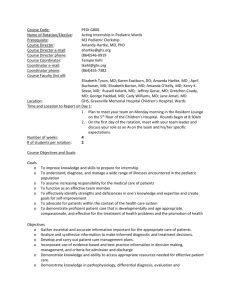
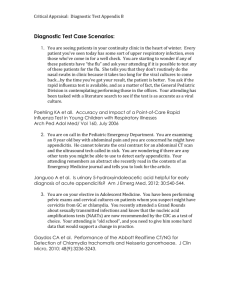
![[#DASH-191] Replace JERSEY REST implementation by](http://s3.studylib.net/store/data/005918124_1-33fb89a22bdf4f7dbd73c3e1307d9f50-300x300.png)
